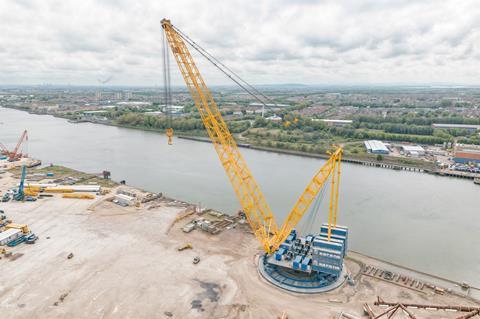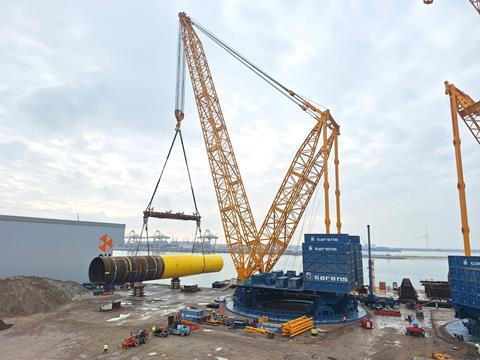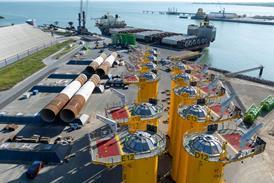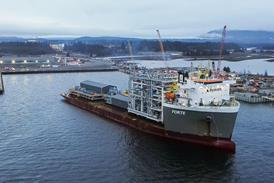Heavy transport engineering specialist Sarens has unveiled the SGC-120.1 – an upgraded version of its SGC-120 crane, now offering the lifting capacity of the larger SGC-140 model.

The SGC-120.1 shares the same assembly time and transportability as the original SCG-120 crane, although the lifting capacity has been boosted to match that of Sarens’ SGC-140 (see more info below).
The SGC-120.1 is suited to operating in confined spaces and for projects involving ultra-heavy lifting. Sarens cites its potential applications in sectors such as offshore wind, petrochemical installations, large-scale infrastructure projects and nuclear sites.
The Sarens Giant Crane (SGC) range has been steadily bolstered over the past 14 years. These models are ring-based heavy lifting cranes designed to European standards, are CE-certified, and boast a compact footprint, low ground bearing pressures, and utilise counterweights that are sourced locally. All SGC models can be containerised and can operate as electric cranes.
The first model, inaugurated in 2011, was the aforementioned SGC-120. It has a lift capacity of 3,200 tonnes, a load moment of 120,000 tonne/m, a main boom length of up to 130 m, along with a heavy-duty jib of up to 100 m.

The SGC-140 – built in 2017 – shares the same features as its predecessor, except that it has a 4,200-tonne counterweight and a load moment of 140,000 tonne/m. It takes six weeks to assemble the crane. Kleopatra Kyrimi, group head of marketing and communications at Sarens, said the SGC-140 will be deployed in Brooklyn, New York City, for a project being led by renewable energy solutions provider Vestas during 2025.
The SGC-250 followed in 2018. With a lift capacity of 5,000 tonnes, a 5,200-tonne counterweight and a load moment of 250,000 tonne/m, the SGC-250 has been performing heavy lifts at the UK’s Hinkley Point C nuclear power plant. It has an outer ring diameter of 48.5 m, a main boom length of up to 160 m and a heavy-duty jib of up to 100 m. Another key and unique feature for a crane of this magnitude is that the giant ring crane can relocate from one lifting position to another, moving on a track, fully rigged. This allows it to cover a much larger lifting radius than other cranes.
The SGC-90 was launched in 2020. Powered solely by electricity and totally silent while in operation, its load capacity is 2,325 tonnes, with a counterweight of 3,000 tonnes and a load moment 99,000 tonne/m. It has an outer ring diameter of 35 m, plus a main boom length of up to 130 m. The SGC-90 can also use the heavy-duty jib in lengths up to 60 m and has a 27.5 m runner with a 200-tonne capacity to enable lower weight lifts to be carried out at high speed.
The SGC-90 was employed for a project in Paris last year, replacing two oversized century-old rail bridge sections. Used by more than 1.5 million people every day, the new sections installed by the crane are now enabling faster and more efficient trains on two crucial lines in the city. The crane lifted the old rail bridges, which each weighed 468 tonnes. Using a 100 m main boom, it then positioned the new structures, which weighed 1,375 tonnes and 949 tonnes. The SGC-90 has since been deployed to Vietnam.
Opportunities ahead
“There is a massive market ahead of us,” said Kyrimi, when asked about what is next for the company’s fleet of heavy lift ring cranes. She cited the ever-increasing size and weight of project cargo, such as jackets, transformers and modules. With this, Kyrimi remarked, the industry must continue to provide solutions for such project demands.
“This has only just started,” she added, acknowledging that Sarens is aware of what its competitors within the international crane-manufacturing market are doing, while remaining focused on enhancing the capabilities of its own fleet.
















